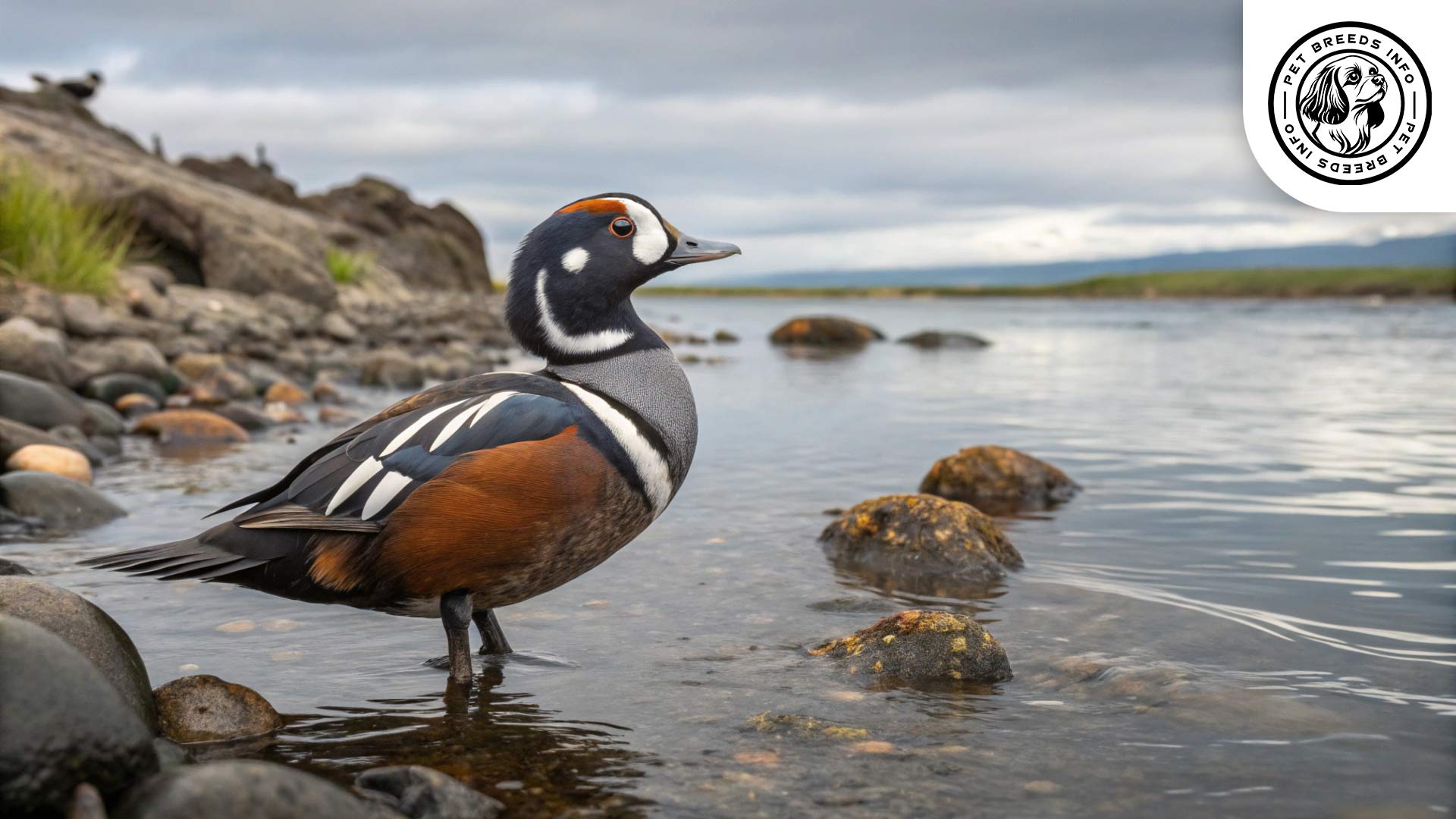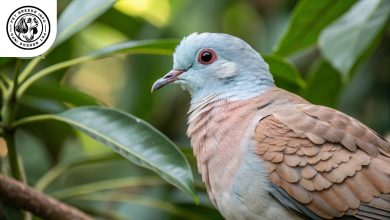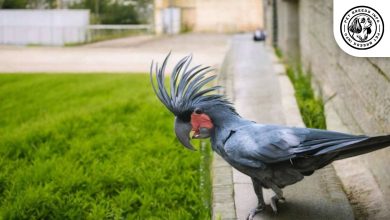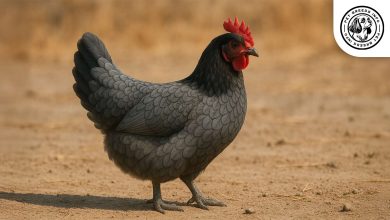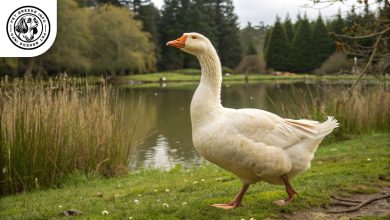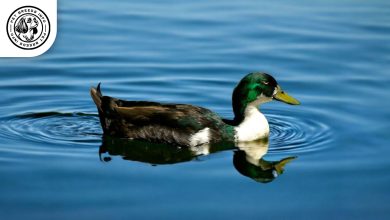Harlequin Duck Breed: Personality, Lifespan, Food & Care
General Introduction of the Breed
The Harlequin Duck (Histrionicus histrionicus) is a strikingly beautiful species of waterfowl known for its unique plumage and preference for fast-moving streams. It is also called the “Lords and Ladies” duck due to its colorful appearance. The species is native to North America and parts of eastern Russia.
Historically, Harlequin Ducks have been found in coastal areas, particularly around the northern Pacific and Atlantic Oceans. Their preference for rocky coastal waters and freshwater streams makes them a unique species among ducks.
Table of Contents
| Common Name: | Harlequin Duck, Lords and Ladies |
| Scientific Name: | Histrionicus histrionicus |
| Origin: | North America, parts of eastern Russia |
| Size: | 15 to 17 inches (38 to 43 cm) in length, wingspan 22 to 26 inches (56 to 66 cm). Males: 1.3 to 1.6 lbs (600 to 725 grams), females slightly smaller. |
| Lifespan: | Typically 5 to 10 years in the wild (may be longer in protected environments). |
| Talking Ability: | Not applicable (wild birds, do not “talk” in a human sense). Their vocalizations are mentioned as squeaky or rattling calls (though not explicitly in this table based solely on the provided text). |
| Colors: | Males: Deep blue-gray body, chestnut sides, distinctive white markings on the head and neck. Females: Brownish-gray plumage with subtle white markings around the eyes. |
| Noise Level: | Not explicitly stated in terms of decibels or a rating, but they have vocalizations. Based on the text, they are not described as particularly noisy. |
| Social Behavior: | Highly social among their own species, often found in small flocks outside the breeding season. Display strong bonds with mates and are monogamous during the breeding season. May join mixed flocks with other waterfowl during non-breeding seasons. Avoid human interaction. |
Physical Characteristics
The Harlequin Duck is a small to medium-sized duck measuring about 15 to 17 inches (38 to 43 cm) in length, with a wingspan ranging from 22 to 26 inches (56 to 66 cm). Males typically weigh between 1.3 to 1.6 lbs (600 to 725 grams), while females are slightly smaller.
The males are known for their striking plumage, which includes a deep blue-gray body, chestnut sides, and distinctive white markings on the head and neck. Females, on the other hand, have brownish-gray plumage with subtle white markings around the eyes.
Harlequin Ducks have small, rounded heads, short necks, and dark eyes that contribute to their distinctive appearance. Their tails are relatively short, and their webbed feet make them excellent swimmers, even in rough waters.
Read More: Call Duck
Personality and Temperament
The Harlequin Duck is highly active, agile, and well-adapted to turbulent waters. They are strong swimmers and are often seen diving to catch aquatic invertebrates.
Their temperament is typically calm but cautious, and they tend to avoid human interaction. They display strong bonds with their mates and are monogamous during the breeding season.
Due to their wild nature, they do not commonly interact with humans and are not typically kept as pets. They are highly social among their own species, often found in small flocks outside the breeding season.
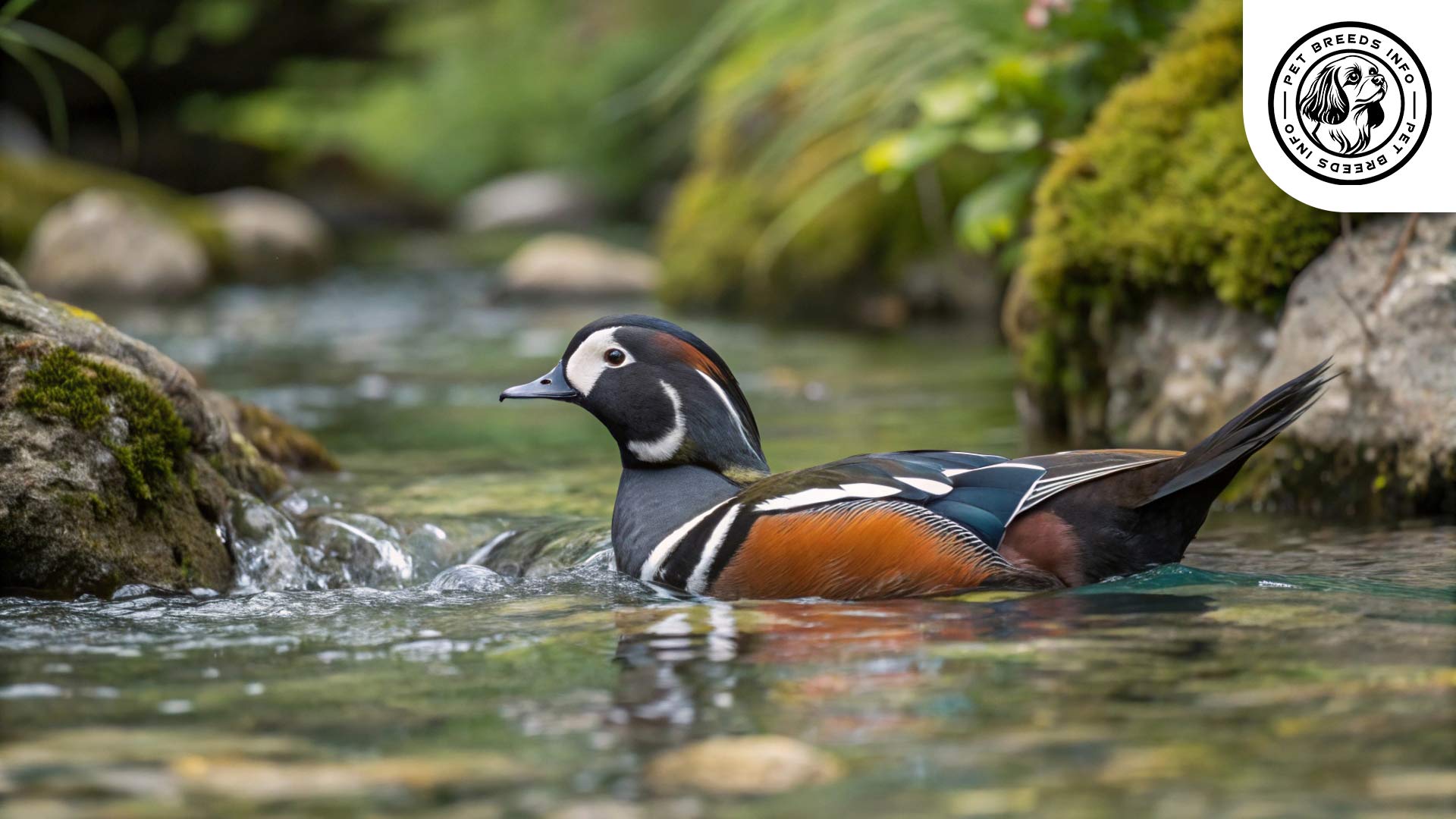
Care and Maintenance Requirements
Since Harlequin Ducks are wild birds, they thrive in natural habitats such as rocky coastal waters, fast-moving streams, and rivers. They are not suitable for captivity unless kept in specialized aviaries or wildlife reserves.
They require access to clean water bodies for swimming and foraging. Their waterproof feathers help them stay warm, but they are naturally adapted to cooler environments and may not tolerate extreme heat.
These birds do not require grooming like domestic pets, as they naturally maintain their feathers through preening.
Diet and Nutrition
Harlequin Ducks primarily feed on aquatic invertebrates such as insects, small crustaceans, mollusks, and fish eggs. Their diet varies depending on the season and available food sources.
They do not consume typical birdseed or domestic poultry feed, as their diet is highly specialized. Providing live or frozen aquatic invertebrates is essential if kept in captivity.
Foods to avoid include processed grains or human food, as these can negatively impact their health.
Health and Common Medical Issues
Harlequin Ducks are generally hardy birds, but they do face threats from environmental pollution, habitat destruction, and predation.
They can suffer from bacterial and fungal infections if water quality is poor. Additionally, exposure to oil spills and toxins in water bodies can seriously impact their health.
In the wild, their lifespan typically ranges from 5 to 10 years, though individuals in protected environments may live longer.
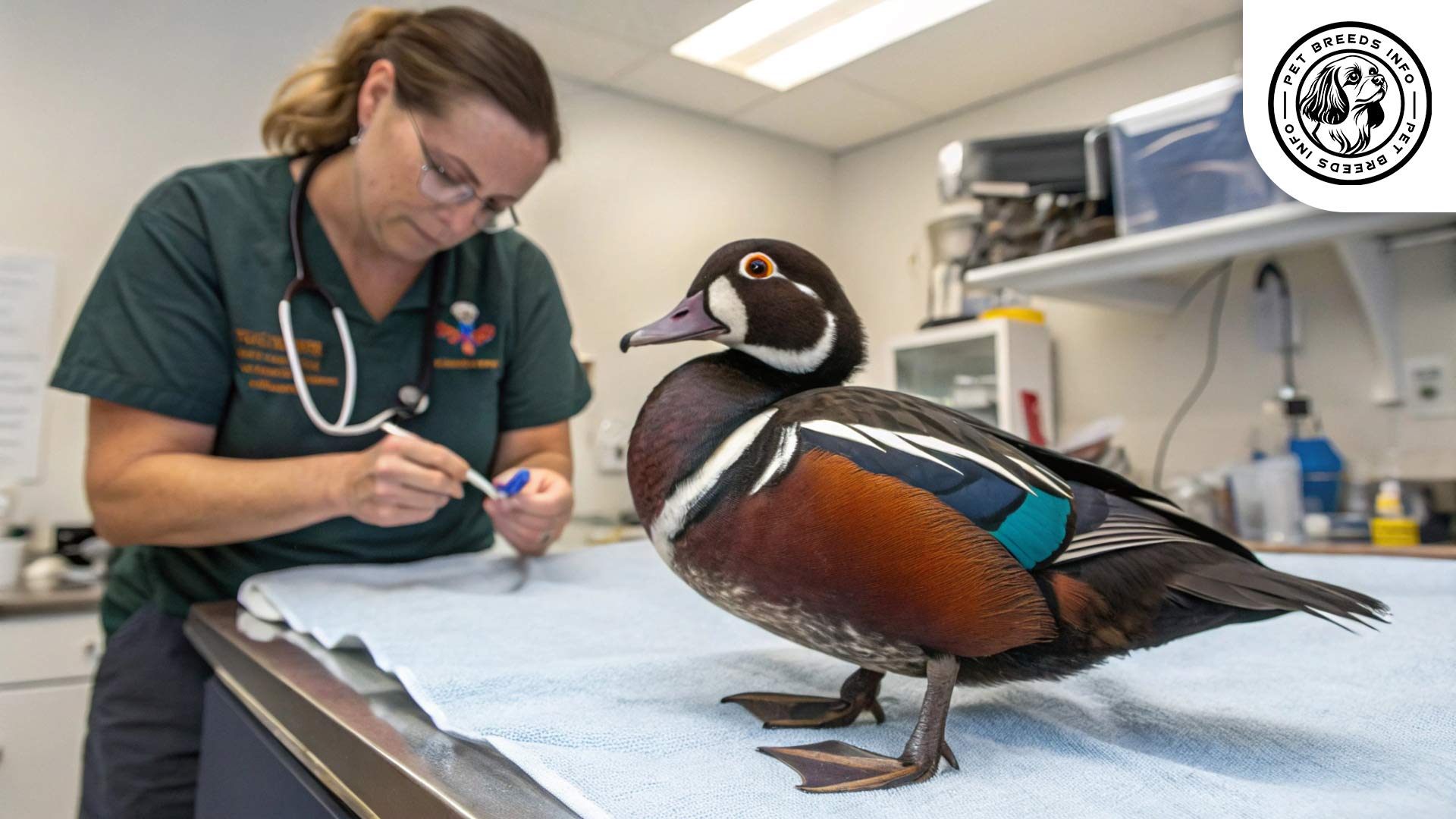
Training and Behavior Management
Harlequin Ducks are wild birds and do not undergo typical domesticated training. Their instincts and behaviors make them well-adapted to their natural habitat, where they rely on their keen senses for survival.
For those caring for rescued or rehabilitated Harlequin Ducks, minimizing human interaction is recommended to prevent stress.
Read More: Senegal Parrot Bird
Interaction with Other Animals and Humans
Harlequin Ducks are social but primarily interact with their own species. During non-breeding seasons, they may join mixed flocks with other waterfowl.
They are not domesticated pets and do not seek human interaction. Their natural caution helps them avoid predators.
Because of their wild nature, they are better suited to conservation-focused environments rather than homes or farms.

Price and Availability
As a wild species, Harlequin Ducks are not typically available for sale as pets. They are best observed in their natural habitats or in wildlife reserves.
For those interested in conservation, supporting habitat protection efforts and ethical birdwatching is highly recommended.
Conclusion and Final Thoughts
The Harlequin Duck is a stunning and unique species best suited to its natural habitat. It is not a domesticated pet, making conservation efforts essential for its continued survival.
Birdwatchers and nature enthusiasts can enjoy observing these ducks in rocky coastal waters and fast-moving streams. Those considering keeping waterfowl should look into domesticated duck breeds rather than wild species like the Harlequin Duck.
Overall, protecting their environment is the best way to ensure the long-term survival of this fascinating bird.
Read More: Red Canary Bird
FAQ
Are Harlequin Ducks kept as pets?
No, Harlequin Ducks are wild birds and are not typically kept as pets. They thrive in natural habitats.
What do Harlequin Ducks eat?
They primarily feed on aquatic invertebrates such as insects, small crustaceans, mollusks, and fish eggs.
Where do Harlequin Ducks live?
They are found in rocky coastal waters, fast-moving streams, and rivers in North America and parts of eastern Russia.
What do male Harlequin Ducks look like?
Males have striking plumage with a deep blue-gray body, chestnut sides, and distinctive white markings on their head and neck.
How long do Harlequin Ducks live?
In the wild, their lifespan is typically 5 to 10 years.
